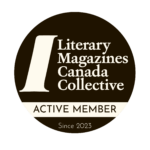Finding the Form with David Waltner-Toews
When I was younger, I always wrote poetry, usually for occasions such as birthdays. In college I aspired to write great novels, and finished a couple that ended up in a drawer or a box somewhere. I never properly trained myself in the skills of long-fiction. This was the sixties. Didn’t the skills just happen? Not. When I was in veterinary college, I got a Canada Council grant for writing short stories; I’d hoped they’d coalesce into a novel, a fictional recounting of coming of age in a family of Mennonite refugees from the Soviet Union. In the midst of trying to share the delights and labours of caring for a young family, novels are impossible. What managed to survive at the margins of daily life were Tante Tina dramatic monologues, poems, short stories, and veterinary advice columns for Harrowsmith Country Life.
To keep my mind active, I give myself challenges. I’ll try most genres, and try to subvert them or modify them. But subverting a genre really only works if you have the basic skills to create in that form. To rebel, one must understand very well that against which one is rebelling. Picasso could do realism before he created new and more interesting painting. For fiction, this lack of a traditional, basic, skill set has led me into repeated failures. I want to rebel too soon. I’ve been writing for decades. Shouldn’t I already know how to do this? How hard can it be?
Can I write essays. No problem. Terzanelles? Those are manageable. When I was asked to co-write a piece to accompany a photograph for the cover on a scholarly journal (EcoHealth), I struggled. How can visual arts and literary arts work together? Is an essay the right form? Can a conversation take place? What would that look like? The afterward for the pieces in TNQ, which I include below, expands on how this conversation between two different ways of engaging with the world took place.
I first encountered Alice Benessia’s work in 2011, in Portugal, at a conference on “Science in a Digital Society,” where she gave a presentation with the somewhat intimidating (to me) title, Science imagery in the digital age: Some reflections on the contemporary techno-scientific heroism of vision. Her presentation asked us to re-consider the photographs we encountered in scientific journals; they were, she explained, images created from particular value-perspectives before being packaged and presented, using modernist design easthetics, as factual evidence. Later, I mulled over the ways in which complex reality, over which I daily imposed emotionally satisfying poetic structures and explanatory scientific models, dwelt somewhere in that wild landscape beyond language, and in the lacunae in my datasets, persistently eluding capture, description, and explanation.
Exploring Benessia’s photographic galleries and writings, I pondered the possibilities of collaborating across artistic cultures. I knew how to do collaborative scholarly research and publish multi-authored scientific papers. I’d even had some of my poems and amateur photographs installed as part of art exhibits with British sculptor Diane Maclean, in which I relinquished to her the job of “making it work.” I could not imagine, however, the shape of a true collaboration between my written words and Benessia’s sometimes blurry or diaphanous, sometimes startlingly clear, but still impenetrable, images. Their meaning eluded me. On the one hand was the chasm, into which many have toppled, where photographs serve as illustrations to poems, and on the other hand lurked an equally dangerous canyon into which unwary poets have fallen, attempting to describe, or worse to explain, the photographs.
Over half-a-dozen years, Benessia and I struggled to find ways that we might stimulate genuine dialogues among words and images. Between our conversations about the nature of artistic work, and explorations into different notions of time and space, I spent many hours staring dumbly at details of individual images and running wildly through the galleries to capture overall impressions. Our first formal attempt at collaboration occurred, in 2014, with one of her photographs on the cover of a scientific journal, and an accompanying jointly-written essay. Our efforts were ignominiously sabotaged when the journal editors tinted the photograph green to better fit their cover design. Our second attempt, in 2016, was an oral and visual presentation at the Joint Research Centre of the European Commission, in Ispra, Italy. Included in a session on “Quality of and through hybridisations? Science, Humanities and Arts to address societal challenges of our times,” our presentation was titled “The ability to respond: poetry and photography as quality evidence.” This second attempt was, in my view, more satisfactory, perhaps because we were each able to maintain artistic integrity and control even as we conversed.
What has emerged from these dialogues is a conversation, sometimes puzzling and often challenging, between friends and colleagues grounded in different ways of experiencing life, and different ways of communicating those experiences. The poems and photographs published here in TNQ are part of that conversation.

